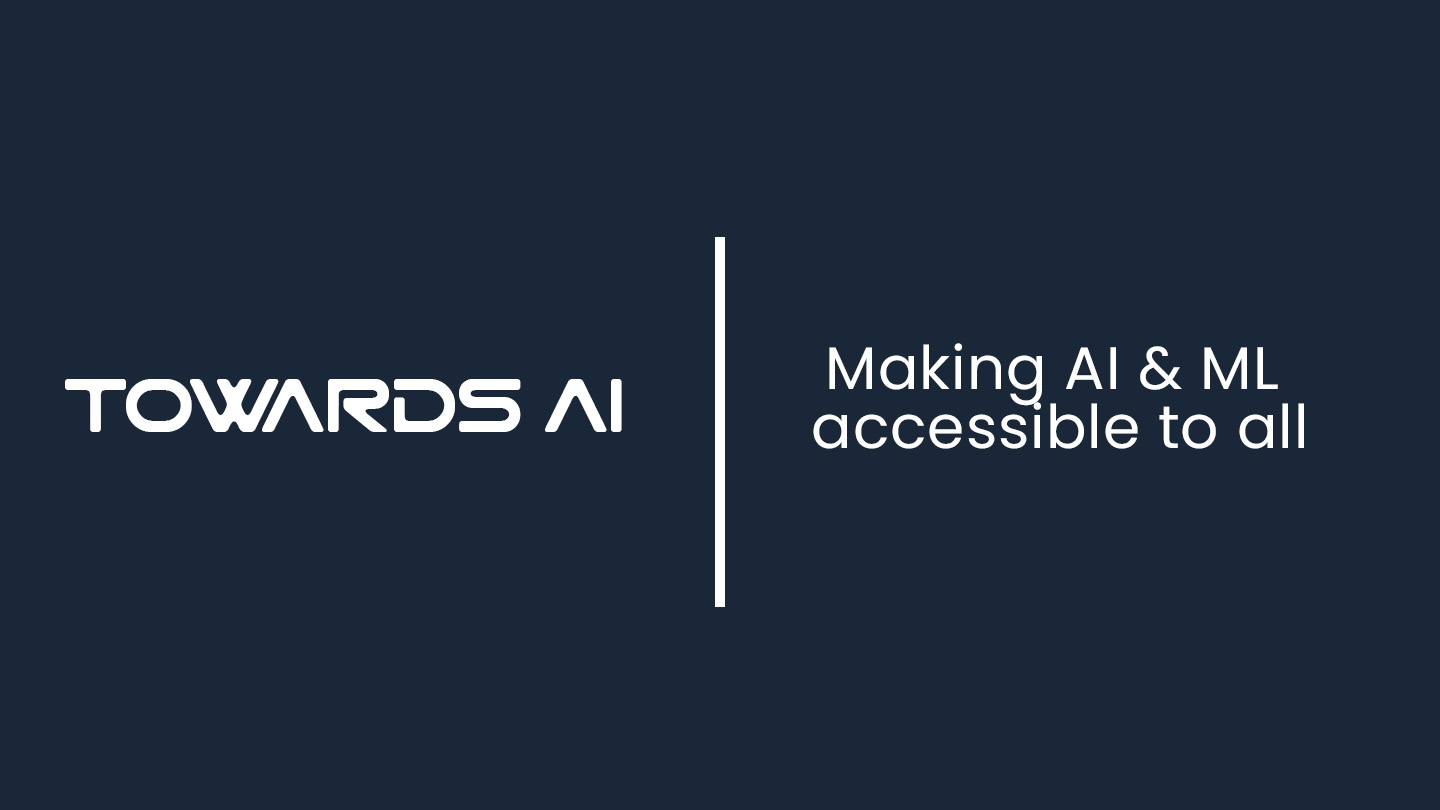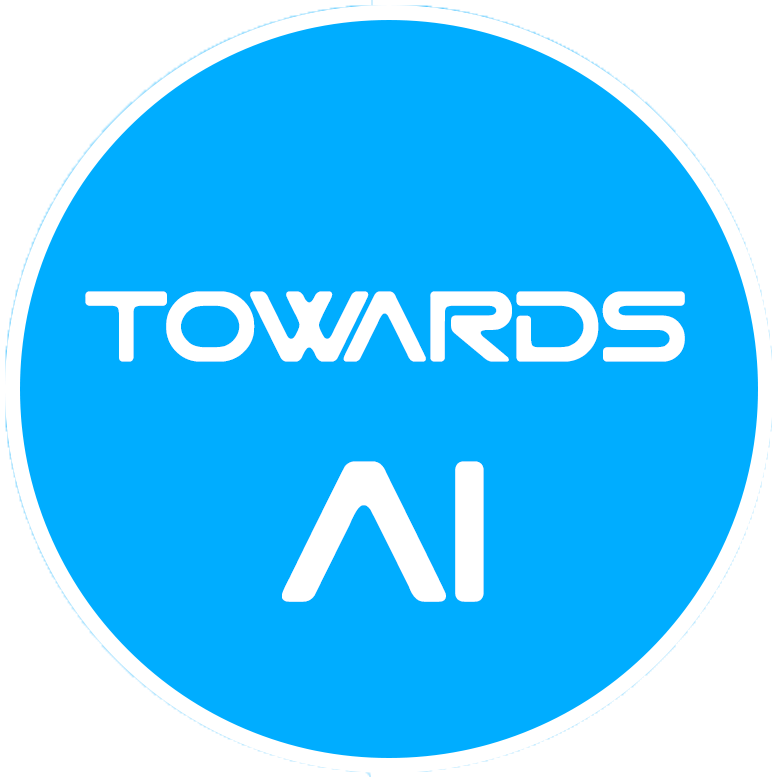
AI for Everyone: The Biggest AI Myths People Still Believe
Author(s): Sophia Banton
Originally published on Towards AI.
AI for Everyone: The Biggest AI Myths People Still Believe
“AI will take away all of our jobs.” “AI will develop intelligence beyond human control and dominate the world.” “AI doesn’t have personal opinions.”
I hear these claims all the time — but as someone who works in AI, I’ve seen firsthand that the truth is far more interesting. Let’s separate fact from fiction.
1️⃣ AI Will Take All Our Jobs
🚫 The Myth: AI will replace humans, leading to mass unemployment.
✅ The Reality: AI automates tasks, not entire jobs — it actually creates new work opportunities.
Fears about AI-driven job loss aren’t new — people have had the same fears about new technology throughout history. Think back to the introduction of ATMs. People feared bank tellers would become obsolete. The opposite happened: tellers transitioned into customer service and financial advisory roles, and banks actually hired more staff overall. This wasn’t a fluke — it’s part of a historical pattern we’ve seen before.
During the Industrial Revolution, automation displaced many traditional workers, but it also created entirely new job categories, like factory supervisors, machine maintenance specialists, and industrial engineers. Today’s AI revolution is following the same path, generating new roles such as:
- AI ethics specialists who ensure AI systems are fair and responsible
- Prompt engineers who teach AI how to respond more effectively
- Machine learning auditors who verify AI decisions
- AI trainers who help refine and improve AI models
📝 Lessons from Experience
I witnessed this automation transformation firsthand when my team created an AI solution to identify and prioritize influential stakeholders. Previously, teams spent countless hours manually researching who mattered most. Our AI solution automated that process — but instead of eliminating jobs, it allowed people to shift their focus from finding the right people to optimizing engagement with them. Instead of replacing human effort, the AI amplified strategic decision-making.
Key Takeaway: AI doesn’t replace human effort — it shifts it. While automation handles repetitive tasks, people are freed up to focus on strategy, creativity, and relationship-building.
2️⃣ AI Will Become Self-Aware and Take Over (The Terminator Myth)
🚫 The Myth: AI will “wake up” and overthrow humanity.
✅ The Reality: AI follows the rules we give it — it doesn’t think or desire like a human.
Pop culture fuels many fears about AI ‘taking over.’ One famous example is Sophia the Robot. Sophia the Robot once “joked” about world domination, and people panicked. But Sophia is not self-aware — it’s just a chatbot with a humanoid face. The entire fear of AI “taking over” comes from science fiction, not science.
📝 Lessons from Experience
AI models don’t “wake up.” In fact, they often fail spectacularly when faced with real-world complexity. I once developed an AI to predict trends from physicians’ notes. It performed exceptionally well on the practice examples, but when tested on actual clinical notes, its accuracy plummeted. The real-world data was too “messy” — filled with shorthand, misspellings, and abbreviations that the model hadn’t seen before. AI only knows what it has seen before — it doesn’t “decide” to improve itself.
Key Takeaway: AI isn’t plotting world domination — it’s following math, not malice.
3️⃣ AI Is Completely Unbiased
🚫 The Myth: AI is neutral because it’s based on data, not emotions.
✅ The Reality: AI learns and copies human biases from its examples.
Bias, or prejudice, can show up in AI responses. This happens because AI learns from existing information, just like a child learns from their surroundings. If the information it learns from has unfairness, the AI might innocently repeat those behaviors when answering our questions or having conversations.
Bias in AI isn’t theoretical — it’s happening in real-world systems today. We have seen it in areas such as:
- Credit scoring models offering lower credit limits to women than men, despite similar financial backgrounds. (Stanford HAI)
- AI-driven risk assessments in the criminal justice system disproportionately flagging minorities as high-risk. (Innocence Project)
- Facial recognition software making more mistakes with darker skin tones because it was mostly tested on lighter-skinned people. (ACLU)
These biases aren’t intentional, but they are real and can have serious consequences.
📝 Lessons from Experience
While building an internal AI solution to identify and prioritize key stakeholders, I was asked whether we should include a column for gender. I declined. Why? Because the data was uneven — there were significantly more men in the profession. Including gender would have skewed the AI’s decisions, unintentionally reducing the influence scores of women. By recognizing this risk early, we prevented the AI from reinforcing systemic bias and ensured a fairer approach to stakeholder analysis.
Key Takeaway: AI is only as fair as what it learns from. Responsible AI means watching out for these biases.
4️⃣ AI Is Replacing Human Creativity
🚫 The Myth: AI is taking over art, writing, and music — humans will no longer be needed.
✅ The Reality: AI assists creativity, but it doesn’t replace human originality.
This is one of the areas in which modern AI shines brightest — the ability to rapidly generate the artistry that lives in our minds. Popular tools like DALL·E and Midjourney allow us to dream, and for adults, it’s a chance to fall in love with art like we did when we were young. But despite their potential, AI tools sit idly, waiting for us. When we make requests, they use the music, paintings, literature, and other works they have learned from to try and create what we ask for. In that regard, AI is relying on our creativity to express its own. I’ve experienced this firsthand while using AI for visual storytelling.
📝 Lessons from Experience
I use AI to help generate visuals for my writing. Sometimes, AI adds something unexpected that makes me rethink my own ideas.
Below, I asked the AI to help me create an image of my sisters and me as children at a waterfall. I guided the AI, but the yellow bow and the distinct color choices — yellow, pink, and blue — were all AI-generated. The AI intuitively captured the idea that in families, sisters express themselves in their own unique ways.
Despite AI’s brilliant additions to my imagination, at the end of the day it’s my vision shaping the final result. AI isn’t replacing my creativity — it’s amplifying it.
Key Takeaway: AI enhances creativity — it doesn’t replace the artist behind the vision.
5️⃣ AI Fully Understands What We Say
🚫 The Myth: AI “gets” us like another human would.
✅ The Reality: AI analyzes words based on patterns, not emotionally.
Early conversational AIs like Alexa and Siri didn’t really understand us. You could ask the same question two different ways and get completely different answers. This wasn’t necessarily a bad thing — it was just how they worked. Their responses were more rigid and rule-based, meaning they weren’t great at handling open-ended conversations, but they also didn’t go off track as easily.
Modern AIs like ChatGPT are better at understanding human language as it is written and spoken, but they still struggle with the quirks of our language — things like sarcasm or humor. So, no, they don’t fully understand us, but they are getting better at it. And even when they seem to “understand us,” it’s just a computer program processing words and making predictions about what the answers should be. It’s a remarkable and giant leap for technology, and possibly humanity, but still just a computer program following instructions. I’ve tested this firsthand, and the results were eye-opening.
📝 Lessons from Experience
I once tested ChatGPT by feeding it a sarcastic sentence:
Me: Oh great, another Monday! My favorite day of the week.
AI: Glad to hear you enjoy Mondays! They can be a great start to a productive week!
ChatGPT cheerfully responded by agreeing with my sentence. It had no clue I was being sarcastic. This shows that AI doesn’t “understand” words — it simply predicts what should come next. Even as conversational AIs like ChatGPT get better, they will still struggle with the subtleties of human expression, like sarcasm and humor. Why? Because they don’t truly grasp meaning — they just make the best guess of what should come next in conversation.
Key Takeaway: Conversational AI is impressive, but it’s still just using patterns, not true understanding.
The Truth About AI
AI isn’t magic, and it’s not our enemy. AI is a powerful tool — it reflects human ingenuity, but also our biases and limitations. I’ve witnessed the myths firsthand, but I’ve also seen the incredible potential of AI to improve our lives when used responsibly. So, if you’re unsure about AI’s role in society and our lives, give it a try and you may unlock new ideas, opportunities and even new forms of self-expression.
The greatest myth of all? That AI’s future is out of our hands.
About the Author
Sophia Banton is an AI Solution Lead specializing in Responsible AI governance, workplace AI adoption, and AI strategy in IT. With a background in bioinformatics, public health, and data science, she brings an interdisciplinary approach to AI implementation and governance. She writes about the real-world impact of AI beyond theory, bridging technical execution with business strategy. Connect with her on LinkedIn or explore more AI insights on Medium.
Join thousands of data leaders on the AI newsletter. Join over 80,000 subscribers and keep up to date with the latest developments in AI. From research to projects and ideas. If you are building an AI startup, an AI-related product, or a service, we invite you to consider becoming a sponsor.
Published via Towards AI











